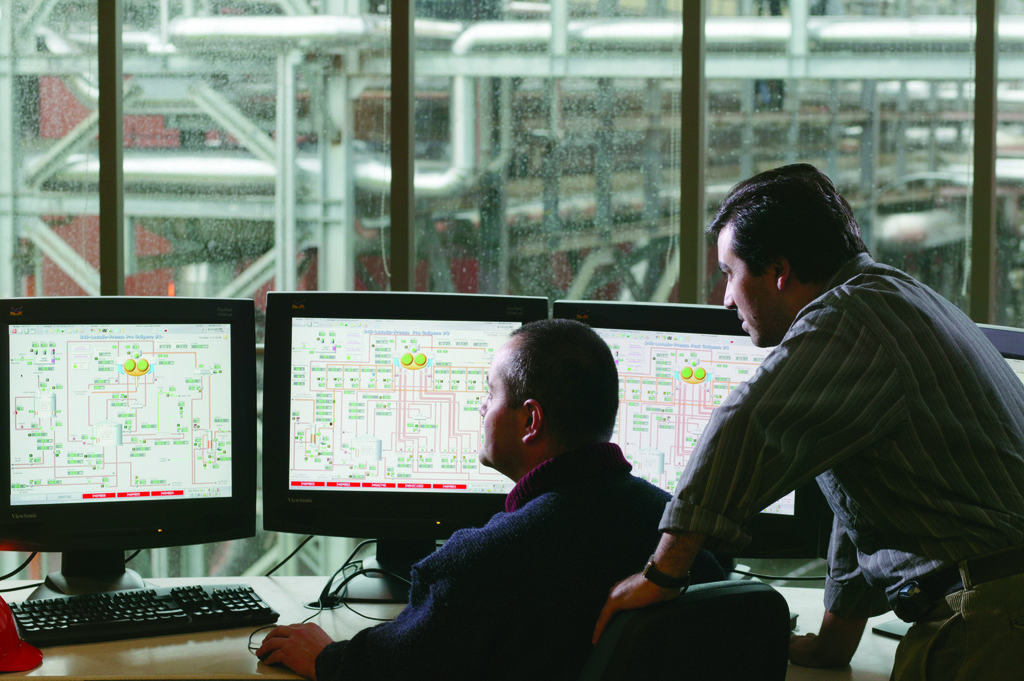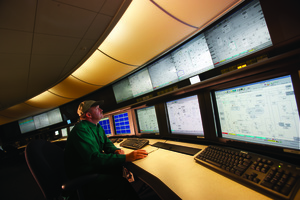
 |
Charlotte Stonestreet
Managing Editor |
Maximising productivity through process control
24 August 2015
Constantly confronted with the need to balance cost, quality and efficiency while maintaining safety across a broad spectrum of complicated and challenging operations, organisations maintaining process operations turn to process control to take the guesswork out of maintaining these complex processes, as outlined in this article by Debbie Colclazier, Emerson Process Management

Today’s control systems go far beyond simple automation. Modern control and safety systems, such as the DeltaV distributed control system (DCS), provide engineers with the ability to create the control strategies needed for the process and safety systems that manage nearly every aspect of production.
By taking advantage of control system features, operators can easily monitor both instrumentation and processes to keep plants safer and more productive. Because good control requires reliable data, smart sensors are preconfigured with integrated diagnostics that can report equipment status to the control system. Having this data means that operations and maintenance personnel can make proactive decisions, assisted by the control system’s predictive maintenance functionality. In the case of imminent equipment failure, operators can schedule maintenance to keep machines running at peak performance without process upset due to failures.
Because process control systems are dependent on people to operate them, the interface must be designed for effective and efficient use. Modern control systems incorporate an easy to use yet robust human machine interface (HMI) to help operators stay focused on critical data. Operators are presented with process state information and can use the graphical interface to make adjustments to the process when necessary.
Alarm analysis
To further help operators filter out unnecessary data, control systems include standardised alarm management tools. Alarm analysis tools available to the DCS allow engineers to dramatically reduce the number of nuisance alarms experienced by operators. This filtering focuses operator attention on the real issues that are significant to process operation. Standardised alarm management tools can shorten the time spent investigating and evaluating alarm data, particularly when there are numerous alarms.
In a crisis the ability to sort and filter alarms can be critical. An operator can use the graphical interface to quickly see if an alarm is associated with the safety system or the process. Using alarm priorities an operator can decide which alarms need attention first. With robust organisational tools, alarms from units that are down for maintenance can be shelved. This helps to ensure that the operator does not miss an item of concern. Because alarm data is managed and historised, operators can not only cope with multiple alarms, but can also recall alarm history to help process engineers see the bigger picture.
Modern sensors have also extended the reach of process control at large sprawling plants. Wireless technology allows for monitoring of distant equipment without expensive cabling. Equipment that was once too distant or too expensive to monitor robustly is now part of the automation system. Operators no longer waste time and money on spurious and sometimes dangerous trips to remote locations, nor do they risk plant shut downs from failure of unmonitored equipment.
Virtualisation technologies are a new trend in control systems, enabling organisations to deploy a more cost-effective control platform which can extend the life of existing control software and provide higher availability than conventional control systems. Virtualisation makes software and hardware updates independent and much less disruptive to plant operations. This technology also provides high availability and disaster recovery features to increase system reliability and protect against disruptive events. Virtualisation offers organisations value and flexibility in control system implementation, allowing customers to fully develop and test their system configurations in less time, and without costly equipment overheads.
In any industry running complex processes, there is much at risk. Plant and operator safety, and the risk of process upset resulting in production loss or quality control issues means that organizations need to be more diligent than ever in maintaining equipment. Modern control systems and good engineering practices allow organisations to stay ahead of process upsets with proactive maintenance rather than playing catch-up after unscheduled shutdowns.
Key Points
- Smart sensors are preconfigured with integrated diagnostics that can report equipment status to the control system
- To help operators filter out unnecessary data, control systems include standardised alarm management tools
- Virtualisation technologies are a new trend in control systems, enabling organisations to deploy a more cost-effective control platform
- Emerson named IIoT company of the year
- Helping upskill Ireland's biopharma workforce
- Protect against system failures
- Enhanced safety
- Power over Ethernet
- Emerson named Industrial IoT Company of the Year for third year in a row
- Scalable performance learning platform
- Offshore pressure control
- Handheld communicator
- Intelligent actuator
- Reduce Fault Times
- Vision Control Makes The Cut
- MULTIPLE PROTOCOL CONVERSION
- MAKE SURE YOU CATCH THE RIGHT BUS
- Smarter, Faster & More Compact Robot Controller
- What Does Windows 8 Mean For Test & Measurement?
- Thyristor Stack Controllers
- Easy To Automate
- Understanding Thyristor Control
- Introduction to embedded control and monitoring webcast



















